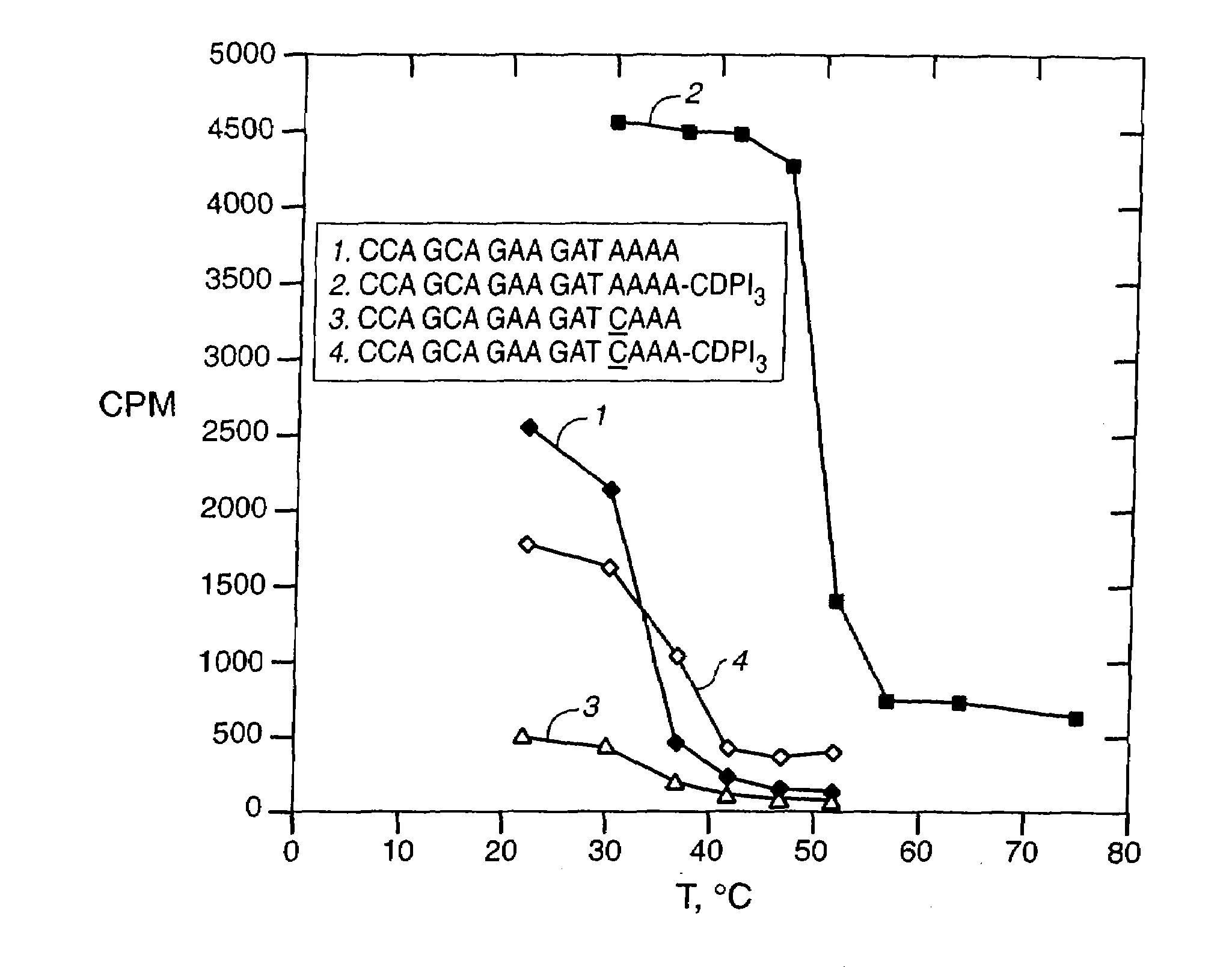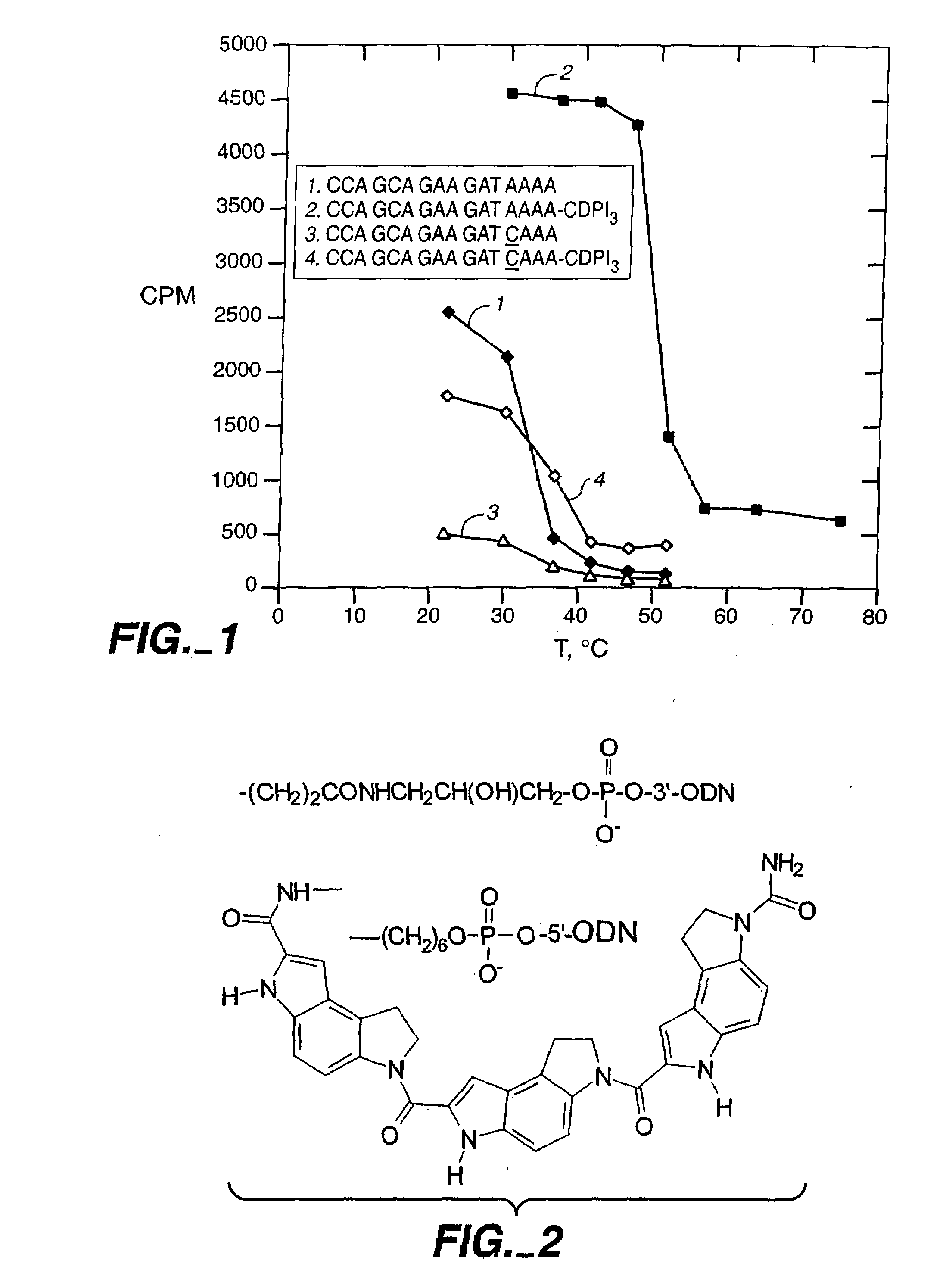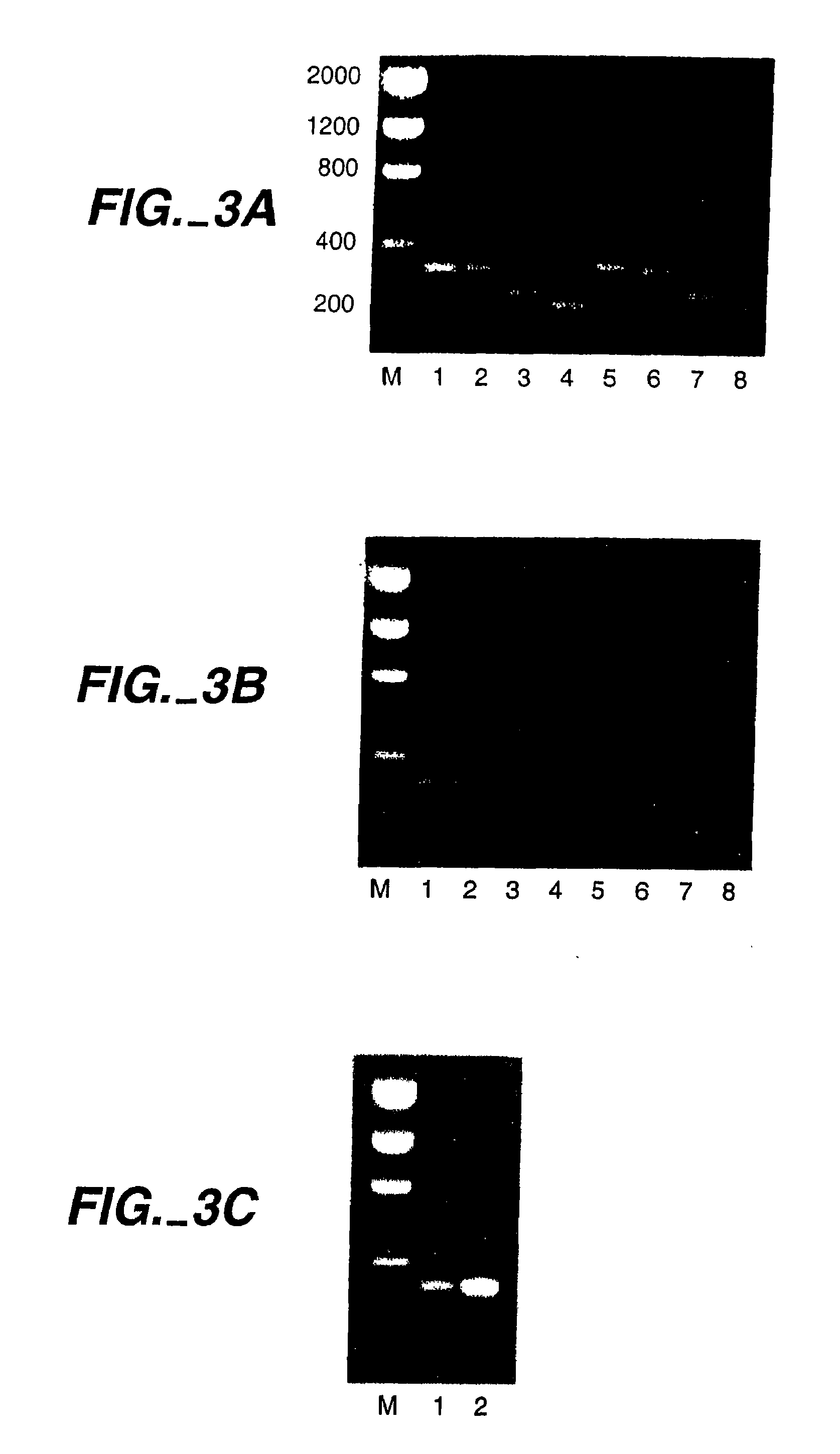Hybridization and mismatch discrimination using oligonucleotides conjugated to minor groove binders
a technology of oligonucleotide and minor groove binder, which is applied in the field of molecular biology, can solve the problems of limiting restricting the use of longer oligonucleotides, and limiting its versatility, so as to increase the degree of hybridization, increase the stability of the hybrid, and increase the stability
- Summary
- Abstract
- Description
- Claims
- Application Information
AI Technical Summary
Benefits of technology
Problems solved by technology
Method used
Image
Examples
specific embodiments
Experimental Section
[0129]General Experimental
[0130]All air and water sensitive reactions were carried out under a slight positive pressure of argon. Anhydrous solvents were obtained from Aldrich (Milwaukee, Wis.). Flash chromatography was performed on 230-400 mesh silica gel. Melting points were determined on a MeI-Temp melting point, apparatus in open capillary and are uncorrected. Elemental analysis was performed by Quantitative Technologies Inc. (Boundbrook, N.J.). UV-visible absorption spectra were recorded in the 200400-nm range on a UV-2100 (Shimadzu) or a Lambda 2 (Perkin Elmer) spectrophotometers. 1H NMR spectra were run at 20° C. on a Bruker WP-200 or on a Varian XL-200 spectrophotometer; chemical shifts are reported in ppm downfield from Me4Si.
[0131]2,3,5,6-Tetrafluorophenyl 3-carbamoyl-1,2-dihydro-3H-pyrrolor[3.2-e]lindole-7-carboxylate (1a). 2,3,5,6-Tetrafluorophenyl trifluoroacetate (2.6 g, 10 mmol, H. B. Gamper, M. W. Reed, T. Cox, J. S. Virosco, A. D. Adams, A. A. Ga...
example 1
MGB-Oligonucleotide Conjugates as PCR Primers
[0240]In this example, we show that a modification which greatly improves hybrid stability of a short oligonucleotide also allows the oligonucleotide to serve as a PCR primer. CDPI3; the trimer of 1,2-dihydro-(3H)-pyrrolo[3,2-e]indole-7-carboxylate, or CDPI; is a synthetic non-reactive derivative of a subunit of the antitumor antibiotic CC-1065 (Hurley et al. (1984) Science 226:843-844). This oligopeptide is a DNA minor groove binder (MGB), with a very high affinity for the minor groove of A-T-rich double-stranded DNA. It has previously been reported that, when compared to unmodified oligonucleotides of the same length, CDPI3-oligonucleotide conjugates form unusually stable and specific hybrids with complementary single-stranded DNA (Lukhtanov et al (1995) Bioconjugate Chem. 6:418-426; Afonina et al. (1996) Proc. Nail. Acad. Sci. USA 93:3199-3204). This example demonstrates that conjugates of short oligonucleotides with CDPI3 make effecti...
example 2
Use of MGB-Oligonucleotide Conjugates in a Hydrolyzable Probe Assay
[0254]In this example, we show that conjugation of MGBs to short oligonucleotides results in improved hybrid stability and improved discrimination between a perfect hybrid and a single-base mismatch, when MGB-short oligonucleotide conjugates are used in a hydrolyzable probe assay. The procedure described by Wittwer et al. (1997a) BioTechniques 22:130-138, was used. In this method, MGB-oligonucleotide conjugates, additionally comprising a fluorophore and a quenching agent, were used as probes in a hydrolyzable probe assay. This type of probe is designed to be complementary to a predicted amplification product, and emits very little or no fluorescence, due to the proximity of the fluorophore to the quenching agent. Formation of a hybrid between the probe and the amplification product produces a structure that is a substrate for exonucleolytic hydrolysis of the probe by a polymerase possessing duplex-specific exonucleas...
PUM
| Property | Measurement | Unit |
|---|---|---|
| temperature | aaaaa | aaaaa |
| temperature | aaaaa | aaaaa |
| temperature | aaaaa | aaaaa |
Abstract
Description
Claims
Application Information
 Login to View More
Login to View More - R&D
- Intellectual Property
- Life Sciences
- Materials
- Tech Scout
- Unparalleled Data Quality
- Higher Quality Content
- 60% Fewer Hallucinations
Browse by: Latest US Patents, China's latest patents, Technical Efficacy Thesaurus, Application Domain, Technology Topic, Popular Technical Reports.
© 2025 PatSnap. All rights reserved.Legal|Privacy policy|Modern Slavery Act Transparency Statement|Sitemap|About US| Contact US: help@patsnap.com



